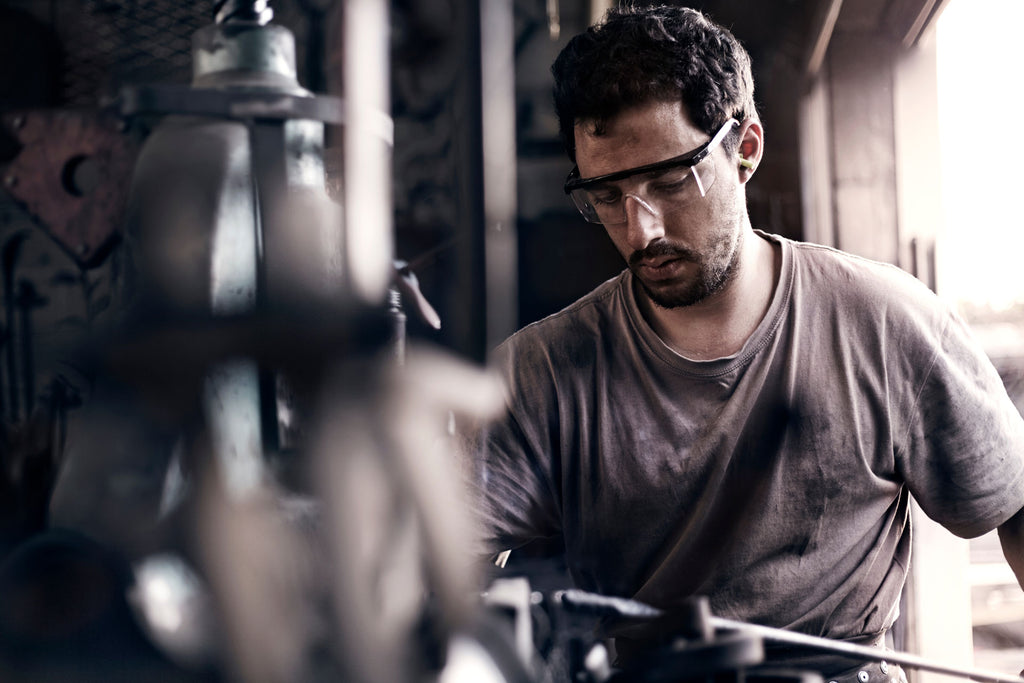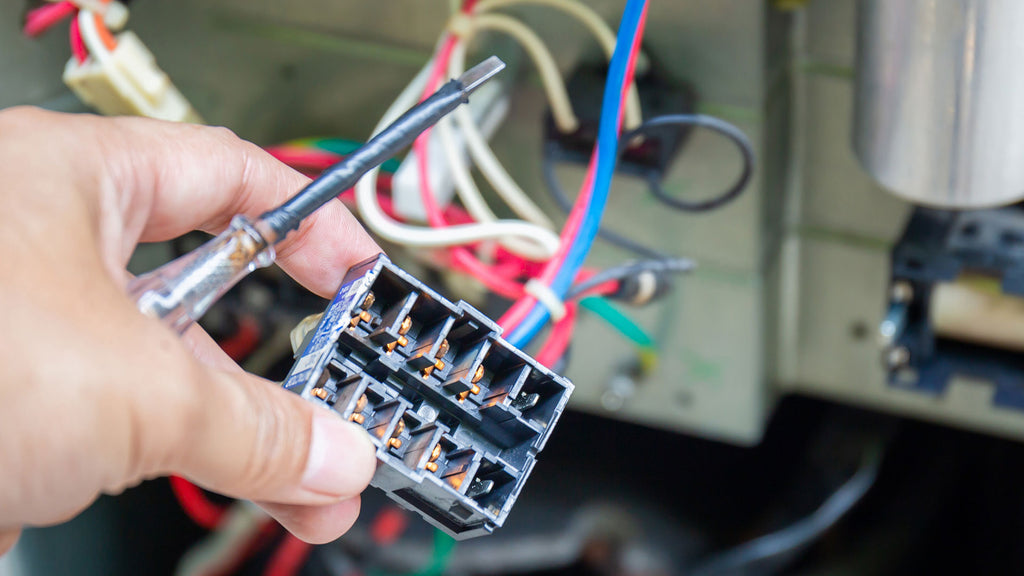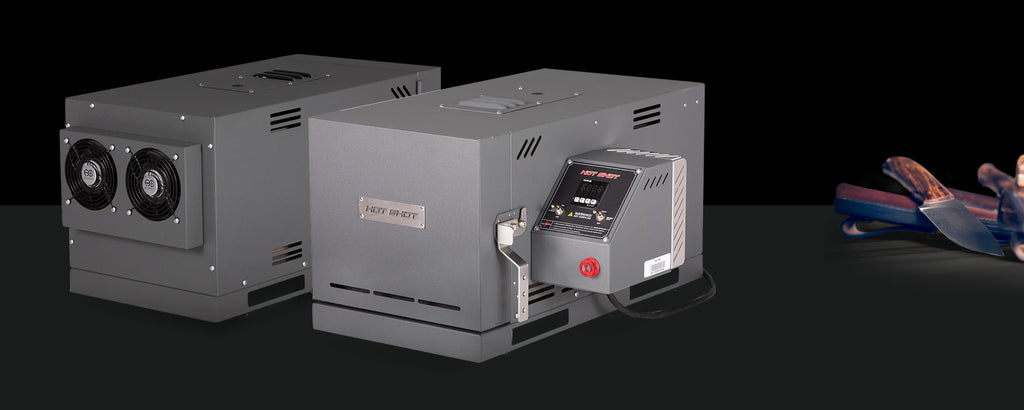
DIY Heat Treating: Exploring Your Opportunities & Options
Knifemakers and other metalworkers take great pride in their self-reliance—with good reason. You can craft beautiful, practical things that most people have to buy at a store.
Your resourceful instincts extend to the heat treating that helps make your products cut better and last longer. So, how much can you DIY heat treating?
In this article, we’ll explore your opportunities and options for going solo as much as possible with your heat treating processes.
Why Heat Treating Matters

Heat treating helps improve a metal product’s physical, chemical, or mechanical properties in a variety of ways, including:
- Hardening – Creating parts that resist wear in stressful applications.
- Softening – Improving machinability and formability.
- Strengthening – Making the metal less prone to cracking.
- Increasing corrosion resistance – Reducing the risk of rust and other deterioration.
Are you new to these processes? Start with our guide to heat treating basics. You can find many more detailed heat treating recipes in our Knife Making and Heat Treating blogs.
The Case for Heat Treating at Home
Doing your own heat treating comes with a learning curve and an equipment investment. (There’s more on what it takes in our guide to heat treating at home.)
On the other hand, commercial steel heat treaters often have extended lead times. And sending out the work adds cost to every project.
So, doing your own heat treating can save you time and money. Besides, as a hobbyist, you’ll probably enjoy doing more of it yourself.
The question is: How feasible is it? Well, let’s take a look!
Materials & Equipment for DIY Heat Treating

What you need to heat treat at home comes down to four fundamentals.
1. Heat Treat Furnace
You need a powerful oven for heat treating that reaches up to 2,250 °F. There are several ways to accomplish this. We’ll get into that in a moment.
2. Safety Gear
You need insulated gloves, safety glasses, and good ventilation in your shop.
3. Quenching / Cooling Medium
After subjecting the metal to the high heat of the hardening process, you need to cool or “quench” it. Depending on the metal, the size of the part, and the specific heat treatment process, you might use:
- Water – Fast quenching of low-alloy steels and carbon-based tool steels.
- Brine – A sodium chloride (NaCl) solution for rapid quenching of high-carbon and high-alloy steels.
- Oil – Slower quenching for medium-carbon and high-carbon steels.
- Air – Simple, slow cooling for low-alloy steels and some tool steels.
4. Hardness Tester
A Rockwell hardness tester is key to measure hardness and verify you have the properties you want after heat treating.
Building Your Own Heat Treat Furnace
How much of a DIY-er are you? Enough to make your own heat treat furnace? If you’re up for the challenge, here are a couple of approaches.
1. The Primitive Backyard Project
Building a crude furnace with basic materials you may already have is possible.
For example, create a forge with a circle of stacked bricks. Place natural lump charcoal in the middle. Light the charcoal. Use a leaf blower to help increase the heat.
Or you could assemble a more robust container with blocks of autoclaved aerated concrete. Cut a hole in the assembly for a MAPP gas torch (hotter than standard propane) as your heat source.
You can achieve the temperatures you need with either of these methods. But there are some significant caveats, which we’ll get to in a bit.
2. The More Precise (and More Laborious) Approach
Want to get closer to the high-quality furnace a commercial heat treat shop is using? Assemble a furnace using a kit of off-the-shelf components from a kiln supplier.
You can build an insulated structure with K23 fire bricks and high-temperature refractory cement. Put together a heating system using A1 kanthal wire, a PID controller, a K-type thermocouple, a solid-state relay, and other components.
Online forums offer detailed explanations of several variations of this approach. Remember that your budget will be much higher than with the primitive methods. And you’ll need more time and skill to make it happen.
Key Considerations for Your DIY Heat Treat Furnace

Here are some essential things to think about before building your furnace.
Safety
Be careful with the wiring and grounding of any homespun electrical setup (such as the more precise assembly discussed above). High heat, faulty wiring, and tight enclosures are a dangerous mix. Meanwhile, with the more primitive approach, you’re dealing with very high heat and the risk of fire and burns.
Precision
Close monitoring of temperature is vital to heat treating success.
You can use a magnet to give you a general idea of whether you’ve reached a hardening temperature. Iron loses its magnetism at 1,418 °F. Then, watch the color past that point until it goes from deep cherry to more orange.
But this method requires a lot of experience to know the color you’re looking for. That color varies by degree depending on the metal, too. Even with the most seasoned eye, you will be much less precise than an integrated thermometer.
Other Limitations
On account of the imprecise temperature control, DIY methods—the primitive approach in particular—aren’t up to the task of heat treating stainless steels and other advanced, low-carbon alloys. You’ll need to stick with simple tool steels instead.
A Different Path to DIY Heat Treating

Do you try to build major equipment—an angle grinder, a belt sander—for your art? Or do you invest in equipment from an expert manufacturer so you can focus on your art?
Most likely, the latter. Should your approach to heat treating your creations be any different?
Instead of spending time and energy building your own heat treating furnace, consider acquiring a dedicated oven.
Yes, you’ll spend more money upfront. But you’ll also get up and running fast—and get results you can count on from the start.
That’s especially true with a heat treat oven from Hot Shot Ovens. All our units offer precise temperature control, a simple interface, and good safety features. They’re made in the USA, with multiple sizes and styles in stock and ready to ship.
So you can focus on the DIY stuff that inspires you: crafting and heat treating the best metal products for customers, friends, and family.
